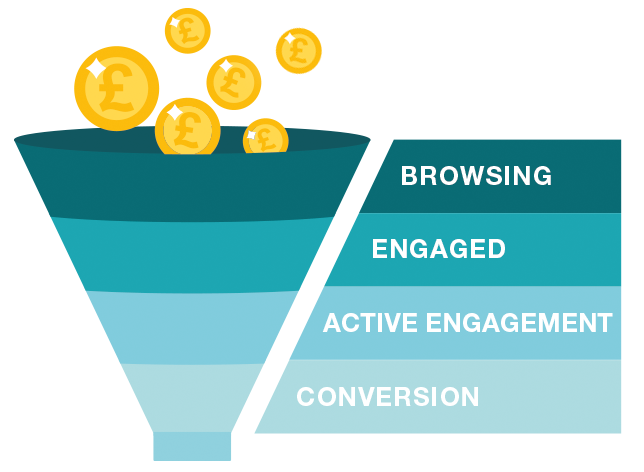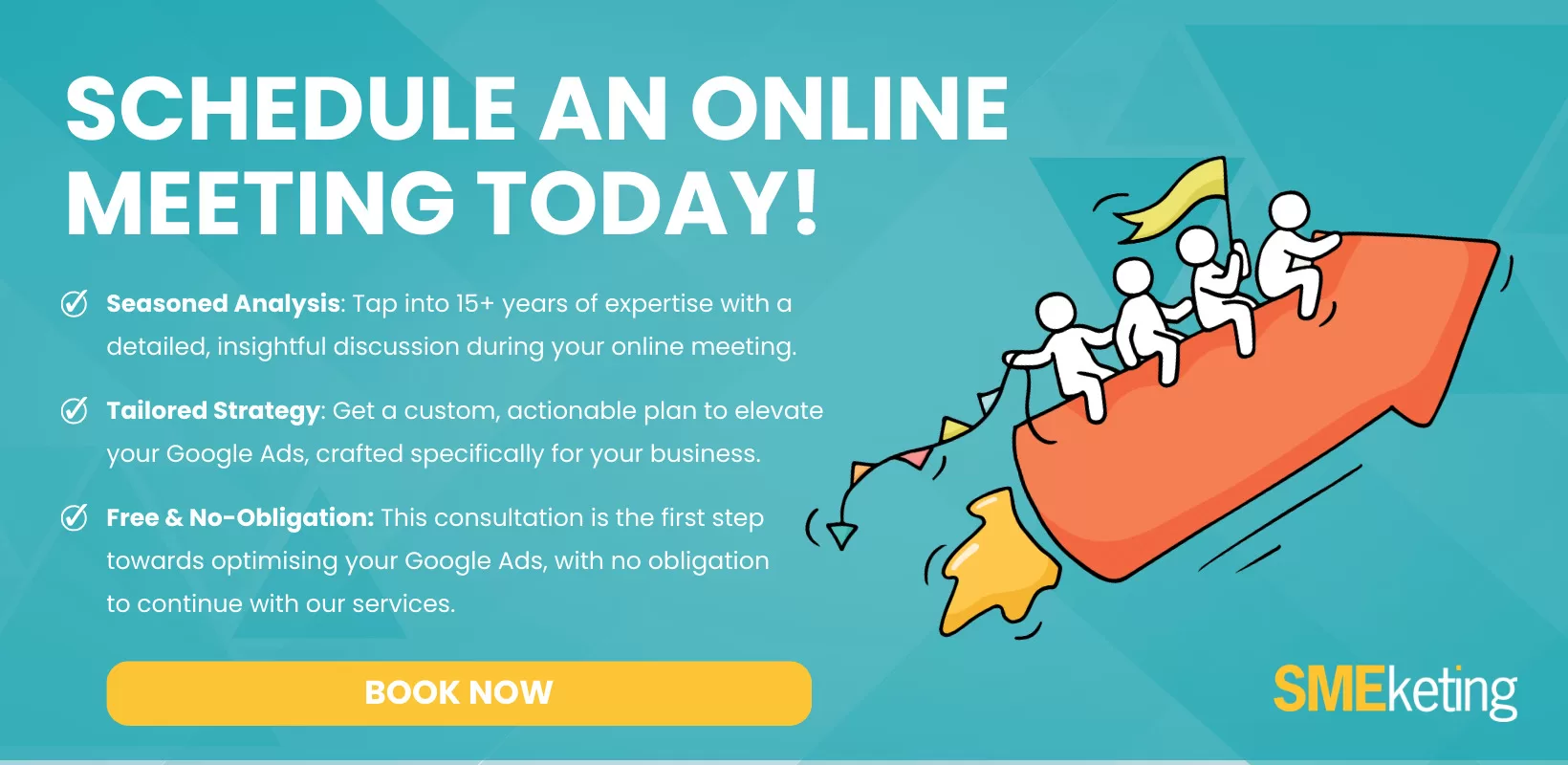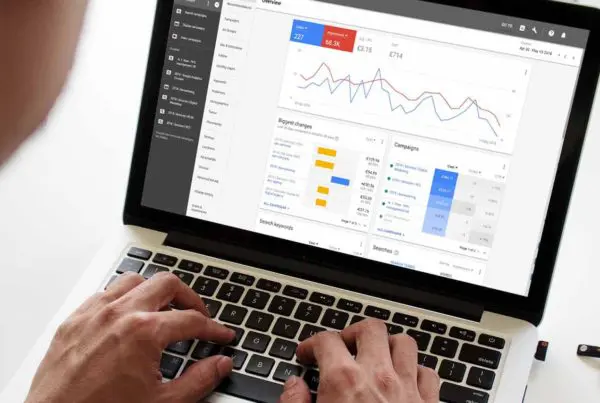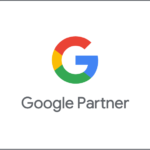In the realm of B2B marketing, the ability to generate qualified leads is vital. Google Ads, with its extensive reach and targeting capabilities, is most definitely a key player in this arena.
This guide aims to delve into how Google Ads can be strategically used to boost B2B lead generation, offering a blend of broad strategies and specific tactics. You’ll go away with an understanding of the key elements that make up a successful Google Ads lead generation campaign, as well as some tips and tricks you might not have previously been aware of.
Understanding the B2B Buyer’s Journey
We all know that the journey of a B2B buyer is distinct and multifaceted, often marked by longer decision cycles and the involvement of multiple stakeholders. Therefore crafting Google Ads campaigns that resonate with each phase of this journey is absolutley essential.
At the initial browsing stage, the focus should be on broad-reaching ads that highlight the unique value proposition of your product or service. As the potential customer moves into the active-engagement phase, your ads should start focusing more on specific features, benefits, and use cases.
Finally, in the conversion phase, your ads need to be more targeted, possibly highlighting pricing, comparisons with competitors, or specific business outcomes.
Effective Google Ads Strategies for B2B
Mastering Keyword Strategy
In B2B marketing, the success of your Google Ads campaign largely hinges on your keyword strategy. It’s crucial to go beyond generic terms and delve into specific, industry-relevant keywords that your potential clients are using.
Conduct thorough research to identify the terms that align with your business solutions and the specific problems they address. Consider using long-tail keywords that capture more specific searches, which, while lower in volume, often indicate higher intent and can lead to more qualified leads.
Crafting Compelling Ad Copy
Your ad copy must resonate with a professional audience. It should clearly articulate the benefits of your product or service, focusing on how it addresses specific business challenges or improves efficiency. Use language that speaks to the reader’s pain points and aspirations.
Include compelling calls-to-action (CTAs) that prompt immediate responses, such as
- Learn More
- Get a Free Demo
- Download a Whitepaper
Tailoring the message to different stages of the buying cycle can also increase the relevance and effectiveness of your ads.
Designing Engaging Ad Creatives
In B2B campaigns, ad creatives should be professional yet engaging. They need to grab attention while conveying the brand’s message succinctly.
Use high-quality images or graphics that align with your brand and the ad’s message. If you’re using display ads or video ads, ensure they are designed professionally and reflect the tone and style of your business. Visual elements should complement the ad copy, creating a cohesive and compelling narrative.
Optimising Landing Pages
The landing page is where your ad’s promise is fulfilled. Ensure that each ad links to a landing page specifically designed to match the ad’s content and intent. These pages should be clean, easy to navigate, and focused on a single objective, such as filling out a contact form or signing up for a trial.
The content on the landing page should provide enough information to persuade the visitor to take this action, including detailing the benefits of your product or service, customer testimonials, and a clear, visible CTA.
Segmenting and Targeting
Effective segmentation and targeting are key in B2B Google Ads campaigns. Use Google Ads’ targeting options to narrow down your audience to the most relevant prospects.
Dynamic ads can be used to tailor your message to different segments, increasing the relevance and effectiveness of your campaigns.
Utilising Negative Keywords
Negative keywords are an often overlooked but crucial component of a robust Google Ads strategy.
By identifying and adding irrelevant search terms to your campaign, you can prevent your ads from appearing in unrelated searches. This not only saves your budget but also ensures that your ads are displayed to the most appropriate audience, improving the overall quality of your leads.
Advanced Google Ads Features
To fully leverage Google Ads for B2B lead generation, you need to utilize its advanced features effectively:
- Remarketing campaigns are particularly effective in the B2B sector due to the longer decision-making process. Remarketing campaigns target users who have previously interacted with your website or ads, keeping your brand top of mind and encouraging them to revisit and convert.
- Custom audience targeting in Google Ads allows for granular targeting based on job titles, industries, or specific companies. This ensures that your ads reach the most relevant and high-potential segments.
- Ad assets, such as call extensions, structured snippets, and site link extensions, can significantly enhance your ads by providing additional information and options to interact with your business directly from the ad.
Measuring and Optimising Campaigns
Effective measurement and optimisation are critical in maximizing the ROI of your Google Ads campaigns. Implementing conversion tracking is essential to measure the success of your ads in generating leads.
Regular A/B testing of various elements such as ad copy, imagery, and landing pages is crucial in understanding what resonates best with your audience.
Additionally, using analytics tools to track user behaviour and campaign performance can provide valuable insights for further optimization.
Case Studies and Examples
In the B2B sector, where purchasing decisions are often complex and involve significant investment, trust and credibility are paramount. Case studies and real-world examples play a crucial role in building this trust.
They serve as tangible proof of the value and effectiveness of a product or service, providing potential customers with relatable and concrete evidence of success.
Conclusion
Google Ads stands as an indispensable tool in the B2B marketing toolkit, offering a range of strategies to enhance lead generation. By understanding the nuances of the B2B buying journey, leveraging the advanced features of Google Ads, and continuously optimising based on data-driven insights, businesses can significantly amplify their lead generation efforts and drive growth.
- How to Do Keyword Research for Google Ads - January 15, 2024
- A Comprehensive Guide to Google Ads for B2C Businesses - January 8, 2024
- How to Write Calls to Action (CTAs) for Google Ads - December 25, 2023








